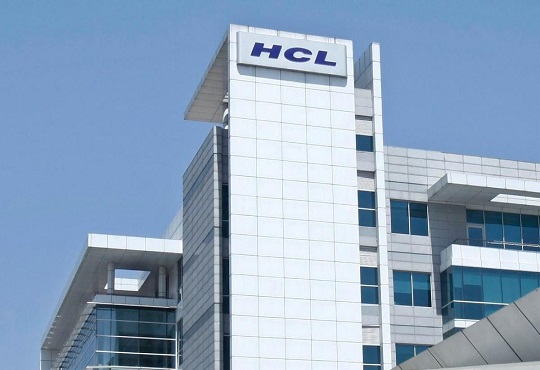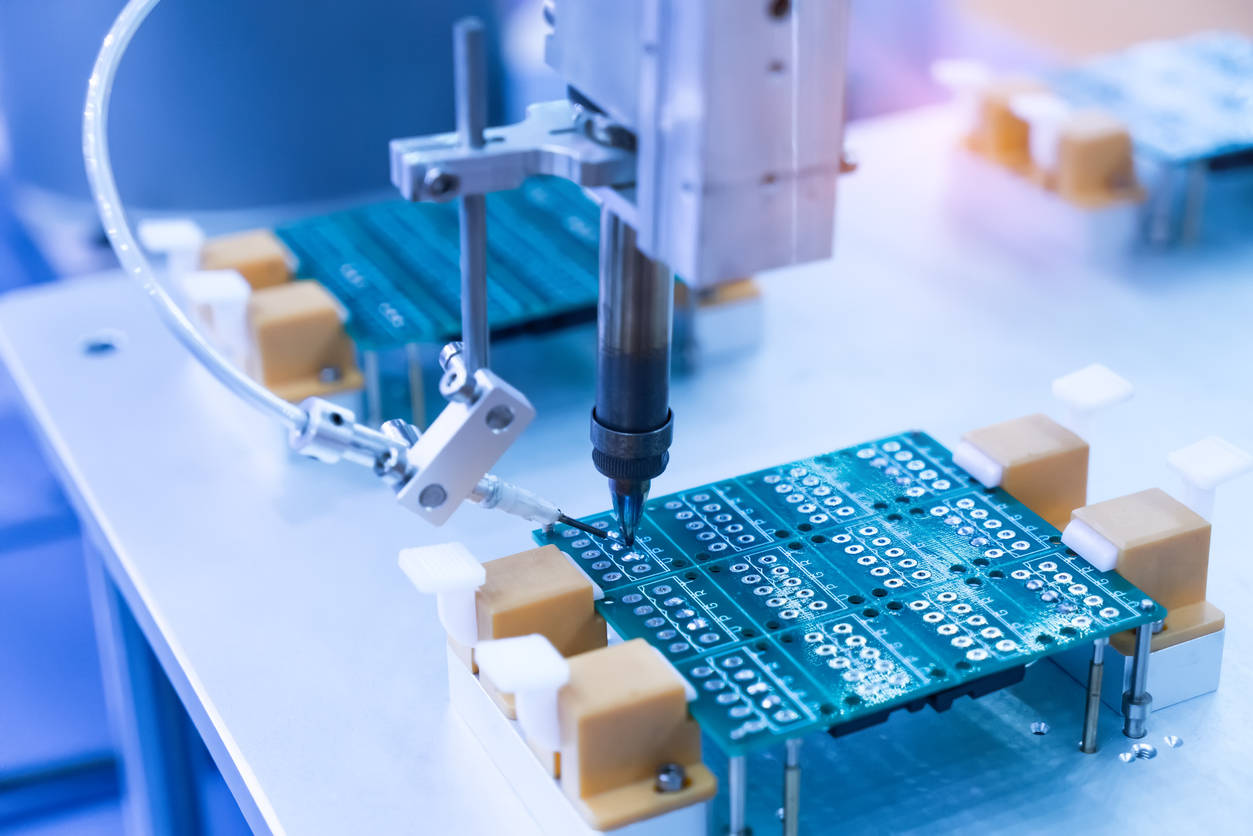HCL Group Plans $300 Million Semiconductor Foray, A Step Further Into India’s Evolving Semiconductor Ecosystem
The HCL Group, known for its expertise in computer hardware, peripherals, and global software services, is making an ambitious move into India's rapidly growing semiconductor industry. According to officials and industry executives familiar with the matter, the group, founded by Shiv Nadar, is close to presenting a proposal to the government for the establishment of an assembly, testing, marking, and packaging (ATMP) unit for semiconductors.

HCL Group’s Proposed Investment in India’s Evolving Semiconductors Market
HCL Group is on the verge of submitting a proposal to the Indian government for the setup of an ATMP unit for semiconductors. The estimated cost of this project falls within the range of $200 to $300 million.
This move is indicative of joining the ranks of companies like Micron, which recently announced an $825 million investment in an Outsourced Semiconductor Assembly and Test (OSAT) plant in Gujarat.
Thus, HCL’s investment signifies a significant step towards strengthening India’s semiconductor value chain, considering that the cumulative investment in the Micron project alone amounts to $2.75 billion.
![]()
Partnership Requirement and Government Talks
To enter the semiconductor value chain successfully, HCL needs to establish a partnership with a company that will have its chips packaged at HCL’s unit.
A senior government official stated that while HCL plans to submit a proposal, they must collaborate with a suitable firm.
The government requires HCL to present a business model to receive incentives under the India Semiconductor Mission. Ongoing discussions between HCL and the government confirm their mutual interest in the proposal.
Importance of ATMP/OSAT Units
ATMP/OSAT units play a crucial role in the semiconductor manufacturing chain by performing essential tasks such as testing and packaging silicon chips. While the HCL Group drives this foray, it is important to note that the initiative is separate from HCLTech, the group’s $12.6 billion IT exports arm.
India’s Semiconductor Initiative and Incentives
India’s semiconductor initiative gained attention following Foxconn’s cancellation of a proposed joint venture with the Vedanta Group. This venture could have marked India’s entry into global chip-making, reducing the country’s reliance on Northeast Asia’s semiconductor manufacturing monopoly.
HCL intends to apply for incentives under the $10 billion semiconductor incentive program, where central and state subsidies can cover up to 75% of capital expenditure for chip manufacturing units established in the country.
Potential Stake Acquisition and HCL’s Manufacturing Legacy
In November, it was reported that HCL was considering purchasing a stake in ISMC Analog, one of the semiconductor wafer fab applicants. ISMC Analog, a Next Orbit Ventures and Israeli company Tower consortium, aims to build a $3 billion fab near Mysuru in Karnataka.
HCL’s decision to pursue an ATMP unit independently is prompted by the lack of progress in the Intel-Tower acquisition, which has consequently delayed the ISMC application.
HCL Group’s manufacturing legacy is notable, having partnered with iconic brands such as Apple, Nokia, and Microsoft in the past. While the company gradually shifted focus from hardware to software services, it maintained a presence in the semiconductor space, offering lithography, etching, assembly, and packaging services to global companies.
The Expanding Semiconductor Ecosystem In India
India’s semiconductor ecosystem is experiencing rapid growth, positioning the country as a significant player in the global semiconductor industry. Several factors contribute to this upward trajectory, including government initiatives, increased investments, technological advancements, and a skilled workforce. The expanding ecosystem presents various opportunities for both domestic and international semiconductor companies.
Government Initiatives
The Indian government has launched several initiatives to foster the growth of the semiconductor sector. The India Semiconductor Mission aims to make India a global hub for semiconductor design and manufacturing. Under this mission, the government provides incentives, subsidies, and support for companies setting up semiconductor manufacturing units in the country.
The $10 billion semiconductor incentive program offers attractive benefits to companies, including capital expenditure subsidies and other financial incentives.
Investments and Partnerships
International semiconductor companies are increasingly recognizing India’s potential and investing in the country. These investments are crucial in establishing semiconductor fabrication facilities and research and development centers.
For example, Micron, one of the world’s leading semiconductor companies, announced a substantial investment of $825 million in an Outsourced Semiconductor Assembly and Test (OSAT) plant in Gujarat. Such investments not only bring advanced semiconductor manufacturing capabilities but also create job opportunities and foster knowledge transfer.
Collaborations with global players and partnerships with domestic companies are also driving the growth of India’s semiconductor ecosystem. These alliances facilitate technology transfer, access to cutting-edge expertise, and the development of a robust supply chain. They also provide a platform for domestic companies to enhance their capabilities and tap into global markets.

Skilled Workforce and Talent Development
India’s vast pool of engineering talent and skilled workforce is a significant advantage for the semiconductor industry. The country’s strong educational institutions produce a large number of engineers with expertise in electronics, electrical engineering, and related fields.
The government and industry have also launched initiatives to bridge the skills gap and nurture talent specific to the semiconductor sector. Collaborations between academia and industry facilitate research and development, skill enhancement programs, and the training of semiconductor engineers.
Technological Advancements
India’s semiconductor ecosystem benefits from advancements in technology, including the growing emphasis on research and development. The country has witnessed the establishment of semiconductor design centers, fabrication units, and testing facilities.
Advanced technologies such as artificial intelligence, machine learning, and the Internet of Things (IoT) are being incorporated into semiconductor manufacturing processes. These technological advancements not only boost the efficiency and quality of semiconductor production but also drive innovation in areas like automotive electronics, consumer electronics, and telecommunication systems.
Market Potential and Demand
The domestic market in India presents significant opportunities for semiconductor companies. The increasing penetration of smartphones, rising demand for electronic devices, and the push towards digitalization create a robust market for semiconductors.
Moreover, India’s focus on areas such as electric vehicles, renewable energy, and smart cities drives the demand for advanced semiconductor technologies and solutions.
The Last Bit, HCL Group’s entry into India’s semiconductor ecosystem marks a significant development in the country’s efforts to strengthen its chip manufacturing capabilities. With a substantial investment of $300 million, HCL aims to establish an ATMP unit and collaborate with chip manufacturers, leveraging its software services expertise.
The government’s semiconductor initiative and the potential for substantial incentives add further support to HCL’s ambitious plans. As India strives to reduce its dependency on foreign semiconductor manufacturers, HCL Group’s foray into this evolving industry signifies a step towards self-reliance and technological advancement.
India’s fast-growing semiconductor ecosystem is transforming the country into a key player in the global semiconductor industry. With supportive government initiatives, increased investments, a skilled workforce, technological advancements, and a promising domestic market, India offers a conducive environment for semiconductor companies to thrive.
The growth of the semiconductor ecosystem not only contributes to India’s self-reliance in technology but also stimulates economic growth, job creation, and innovation. As the ecosystem continues to expand, India is poised to become a major semiconductor hub, driving advancements in various sectors and propelling the nation towards technological leadership.





